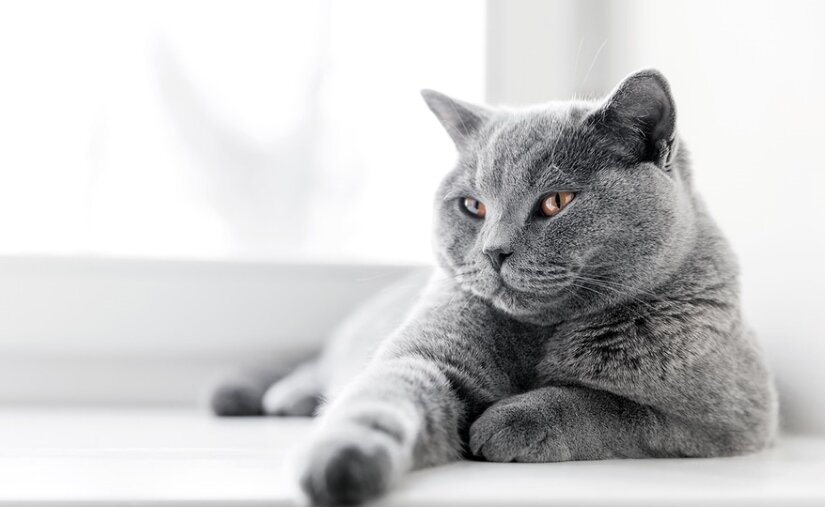

Females: 8-14


The British Shorthair is an ancient cat breed that originated from the U.K. It is thought that this cat breed dates as far back as the first century AD. Historians believed that the Egyptians took domesticated Egyptians cats to the U.K, resulting in the interbreeding of these cats with the European wildcat population.
Brief History
The British Shorthair was the only pedigreed cat breed at cat shows during the Victorian era. During WW1 and WW2, the British Shorthair almost vanished, but thanks to cat breeders in the U.K, this breed was kept alive. By 1967, the British Shorthair was recognized by the American Cat Association. That said, the Cat Fancier Association only recognized this terrific breed in 1980. Today, all cat associations recognize the British Shorthair. This cat breed is renowned for its strength and hunting ability. Many are under the assumption that this cat breed is blue in color. The British Shorthair comes in various colors of which blue–grey or “British Blue” is the most popular.
Physical Description
The British Shorthair is a large cat breed with a broad chest. The legs are thick and strong with large paws. The tail is blunt-tipped, and of medium- length. With a round head, and large round eyes, the British Shorthair has a short muzzle, and round cheeks. Mature males have prominent jowls. The British Blue Shorthair has coppery, orange eyes. The ears are large, broad and widely set. The ears are triangular and pointy.
The British Shorthair matures slowly, and will reach peak physical development at three years of age. This is a dimorphic cat breed, in which males are larger than the females. The coat is plush and thick with no undercoat. There are noticeable “crisp” hairlines that are raised when the British Shorthair walks or runs. Coat colors can be found in solid colors, colorpoint, tabby, shaded, and bicolor patterns. The solid colors are:
- Black
- Blue
- White Cream
- Red
- Silver
- Golden
- Cinnamon
- Fawn
- Chocolate
- Dilute lilac
Tabby British Shorthair patterns include the following:
- Classic Tabby
- Mackerel Tabby
- Spotted Tabby
- Ticked Tabby
Non-Tabby patterns include the following:
- Tortoishell
- Bi-Color
- Van-Patterns Bi-Color with white
- Smoked
- Tipped & Color Pointed
Temperament
The British Shorthair is an intelligent cat breed that is easy –to- train. This smart breed adapts easily to new surroundings, and enjoys being around people, even children. The British Shorthair gets along well with other animals like rabbits, dogs, other cats, and even horses. This breed tends to be clumsy, yet is moderately active. This is a kind and sweet-natured cat breed that is devoted to family. That said, they do not enjoy being carried around or being picked up. The British Shorthair does well with being an indoor cat.
Special Needs
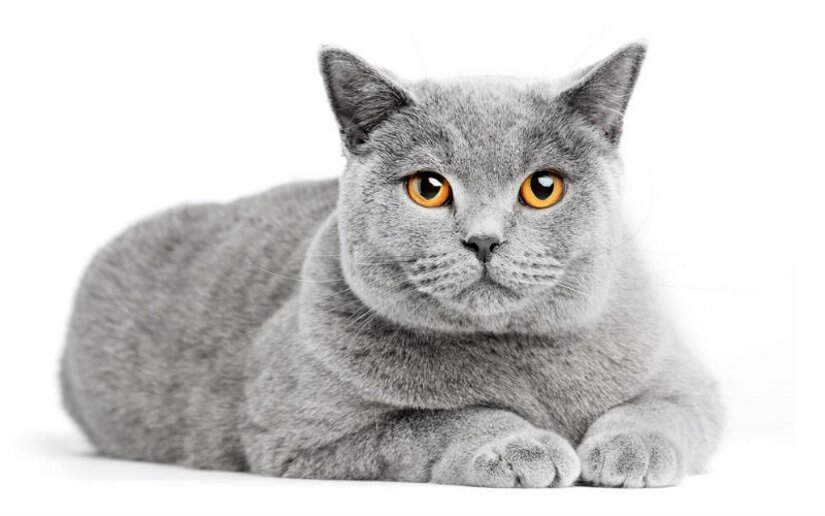
The British Shorthair does best as an indoor cat. This cat breed thrives on affection, and plenty of cat toys. This cat breed is proud, and enjoys positive clicker training. It is non-aggressive with other cats. Eye tearing may be a problem with this cat breed. Inactive cats tend to pick up weight, and are prone to more medical conditions, like liver disease. Daily grooming needs to be a priority with this cat breed.
Exercising cats is more difficult than with dogs, yet cat parents can do so by purchasing certain cats toys to promote exercise. Litter box training needs to start during kittenhood. All cats are super clean animals, so it is very easy to litter box train. Litter boxes for cats need to be kept clean, or your cat may not use it. All cats will need parasite control and routine health care throughout its life. This means vaccinating your cats. This is an important part of keeping your cats healthy throughout their lives. Your British Shorthair will also need to be spayed or neutered. Consult with your veterinarian, and always consider veterinary health insurance for your cat.
Possible Health Concerns
The British Shorthair is a healthy and moderately active cat breed that may be susceptible to the following health conditions:
- Hypertrophic Cardiomyopathy: This is a heart muscle disorder where the heart walls of the left ventricle thicken. This results in the walls becoming stiffer. This is a common primary heart disease in cats. It tends to noticed at around 3 months to 17 years of age. Most cats will be middle aged when this disorder occurs. This disorder tends to affect males more than females, and it is an inherited genetic defect. Symptoms may include difficulty breathing, weakness or paralysis of the hind limbs. Fluid may also accumulate in the lungs, and in the space between the lungs and chest wall. Veterinary treatment will aim at improving cardiac function, and reducing blood clots. There is a good longterm outlook for mildly affected cats. Consult with your veterinarian for advice.
- Gingivitis: This is when the gums become inflamed due to bacterial plaque. At this stage the ligaments and bone are not infected. Gum color in cats will change from a light pink to red or purple. The gum edge wills well. Symptoms include bleeding and bad breath. This can be reversed with proper teeth cleaning. That said, it can worsen and result in periodontitis. Consult with your veterinarian for an effective treatment plan.
- Polycystic Kidney Disease. This occurs when the polycystic kidney has numerous cysts within the functioning part of the kidney resulting in enlarged kidneys. Consult with your veterinarian if your cat vomits frequently, has a decreased appetite, and increased thirst or urination.
Exercise
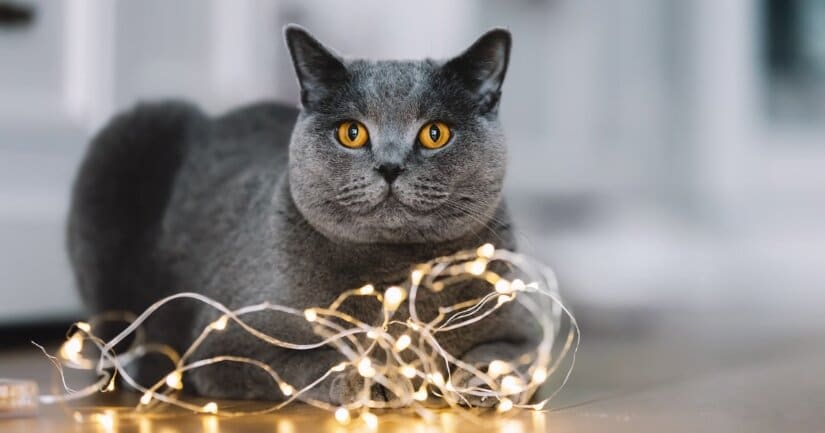
Playtime for indoor cats is extremely important. Because cats are natural predators, and are kept in a domestic environment, daily playtime schedules should mimic “hunt, eat, and chill”. This would be the same schedule that they would have out in the wild. By providing a healthy and stimulating playtime schedule, many feline behavioral problems are eliminated or reduced in frequency. Cat parents need to mimic a cat’s “natural environment combined with activity” within their household, to ensure that their cats are well-balanced and happy.
The British Shorthair cat breed needs daily exercise combined with plenty of mental stimulation through active play and interaction with people. Cat parents can use cat toys like the Mousr or Cat Dancer to get their Ragdolls to play. This will encourage your cat to play. Finding a variety of mentally stimulating cat toys will allow for your Ragdoll to lead a well-balanced life, with the right amount of exercise and mental stimulation. Cat harnesses also allow for daily walks. Cats can benefit from being outdoors and going for a safe walk on a harness . Indoor cats will get to experience new sights and sounds. There are many new cat harnesses on the market that allow for your British Shorthair to have more freedom. These include 10-foot cat leashes that are retractable, and come in corded and taped styles.
This cat breed is a moderately active cat breed that thrives on being with family members. Cat gyms, cat scratchers, and interactive cat toys within a cat friendly home environment work best for this fabulous cat breed.
Look out for the latest cat toys like Ripple rug play mats, the Feather Whirls, pet cube toys, food trees, turbo scratcher toys, cat companion interactive toys, and electronic motion toys. Interactive cat toys help to keep cats entertained when you’re out and about.
Cat trackers like the Pod are waterproof and allow for cat parents to track their cat’s daily activities. Cat parents can track their cats by mobile phone and computer applications.
Nutrition
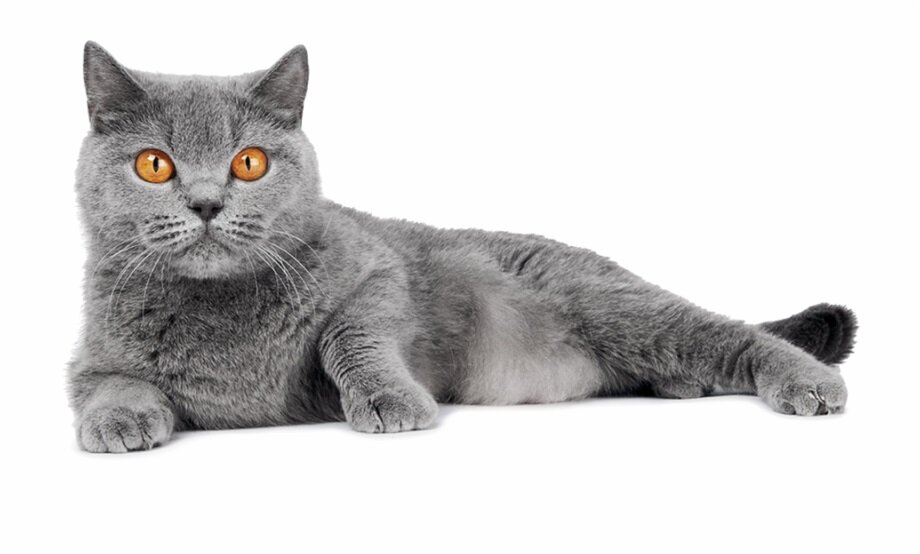
The British Shorthair cat breed will need a high-quality diet. That said, a high-quality diet that is appropriate for the specific life stage of the cat is necessary. Protein as an ingredient, needs to come first. Dry cat food is a popular choice because it promotes healthier gums and teeth. Yet wet food is more often recommended by veterinarians because it provides more moisture to cats. Cats don’t drink a lot of water and tend to sometimes get dehydrated. Wet cat food also has its benefits. By choosing a well-known name- brand cat food that has scientific backing, as well as quality control, cat parents can be assured that they are providing a well-balanced diet.
All cat breeds need high- quality fat and protein in their diets. They also need amino acids, including taurine that cannot be found in either human food or dog food. There are also numerous specialty diets for your cat that are formulated specifically for certain medical problems like urinary tract disorder, obesity, or kidney disease.
All cats do well by being fed twice daily. During kittenhood, kittens will need to be fed every few hours. Growing kittens need more calories, nutrients, vitamins, protein, and calories. Your cat should be able to enjoy a peaceful meal in a quiet corner of the house. Some cat parents prefer to leave cat kibble out 24/7. When looking for a high-quality cat food, here’s what to look out for:
- No low-quality fillers
- No artificial additives
- Low grade ingredients or toxic ingredients
- All cat food has to be meat-based because all cats are carnivores
- No garlic
- Plant-based ingredients should be listed after the protein-based ingredients
Consult with your veterinarian for the best dietary advice for your British Shorthair.
Grooming
The British Shorthair needs daily grooming for skin and coat health. Because this breed is a shorthair cat breed, taking care of this cat breed is super easy. This cat breed has a short and smooth coat. All cat breeds will groom themselves several times throughout the day. Daily grooming is necessary because it limits the amount of hair that your cat will consume. This helps limit the development of hairballs. Your British Shorthair will enjoy being groomed.
Ears should be checked weekly for cleanliness and sensitivity. If there is a build-up of wax and dirt, organisms can lead to an ear infection. Consult with your veterinarian about ear cleaning.
Healthy cats need minimal bathing with a gentle cat shampoo. Your cat will need dental care as well. By feeding a high-quality cat food, and having professional dental cleanings with your veterinarian throughout your cat’s lifetime, your British Shorthair will have less of a chance of developing gingivitis or gum disease. Small and frequent effective hygiene habits will make a big difference in maintaining healthy skin, healthy teeth, and good overall health. Look for environmentally safe pet products that have natural ingredients.
Adopting a British Shorthair
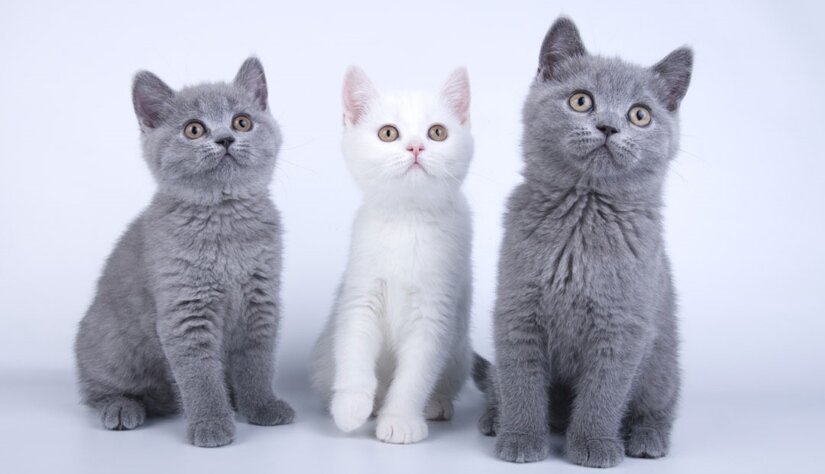
Fill your home with crinkle balls, sisal rollers, and plush feline toys before bringing your new cat home. There are also numerous battery-operated toys that function on their own and spin. These are designed to stimulate a cat’s prey movements, and will encourage your British Shorthair to practice his stalking skills. Free-standing cat scratches, and cat condos help to encourage scratching in the right places. Cat condos are perfect for the newly adopted kitty and offer a place to hide, perch, and scratch!
Cat parents often wonder if they should adopt or purchase. With so many cats up for adoption, it’s the only way to go! When choosing your British Shorthair, ask questions, and look for a great temperament! That said, numerous cats can be quirky at shelters, but soon settle down in their new homes, and become very friendly and sociable. In addition, kittens should be playful and curious.
Sickly kittens that have bad odors or plenty of diarrhea stains, and a dull coat need to be seen by a veterinarian as soon as possible. Kittens when ill, can go downhill very quickly. However, the rewards of adopting a sick animal and caring for it are tremendous, provided that good veterinary care is provided right away. Keep in mind that vaccinations and parasite control are an important part of feline health care.
Your cat will also need to be protected from household hazards, most especially electrical cables, poisonous plants, medication, and open windows. The British Shorthair makes for a wonderful adoption! As usual, make sure that children are always gentle and quiet around your cat.
Give your cat time to adjust to his new surroundings. As with any cat adoption, make sure that you have the time and resources to take good care of your British Shorthair.
